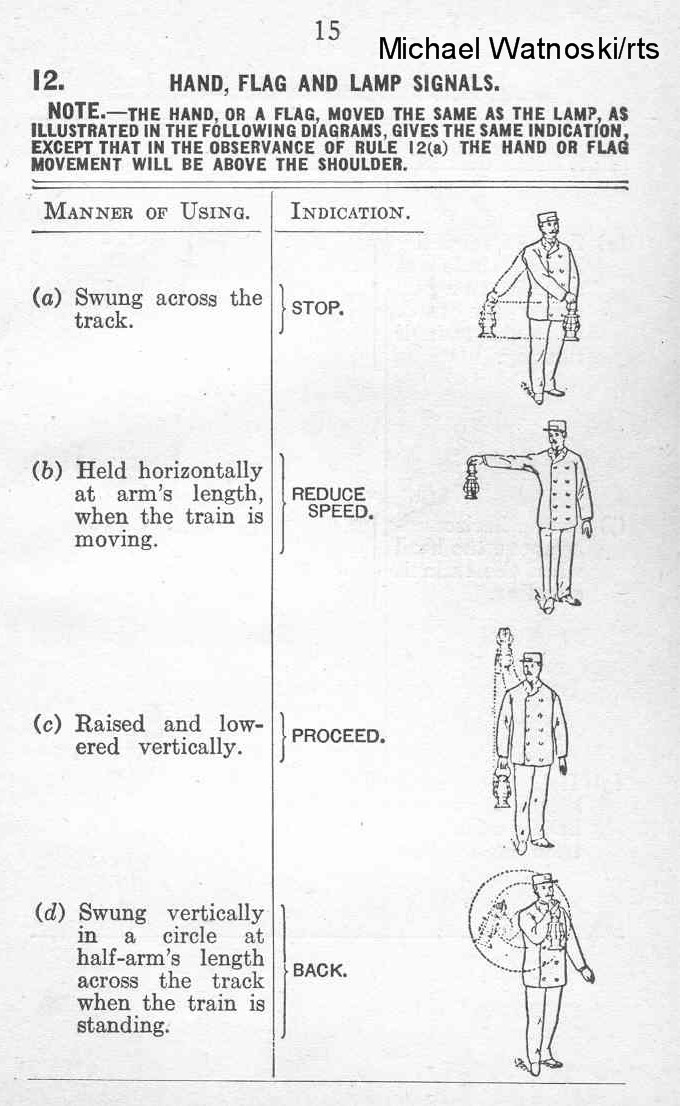
Railroad/Train Hand Signals RSUS
Railroad Hand Signals Lantern, Flag, or Empty Handed GO! Raise straight up and down. GO BACK! Swing up and down in a circle at half an arm's length across the track, when the train is moving. SLOW DOWN! Hold at arm's length when the train is moving. TRAIN HAS PARTED! This tells the trainmen that cars have come loose. Swing up and

lost art of railroad hand signals.wmv YouTube
Welcome to "Railway Signs and Signals of Great Britain", where you can learn about the many different signs and signals that appear by the side of Britain's mainline railways for the purpose of conveying information or instructions to train drivers.The object of this website is to illustrate, and explain the meaning of, every signal indication or lineside sign that exists today or has existed.
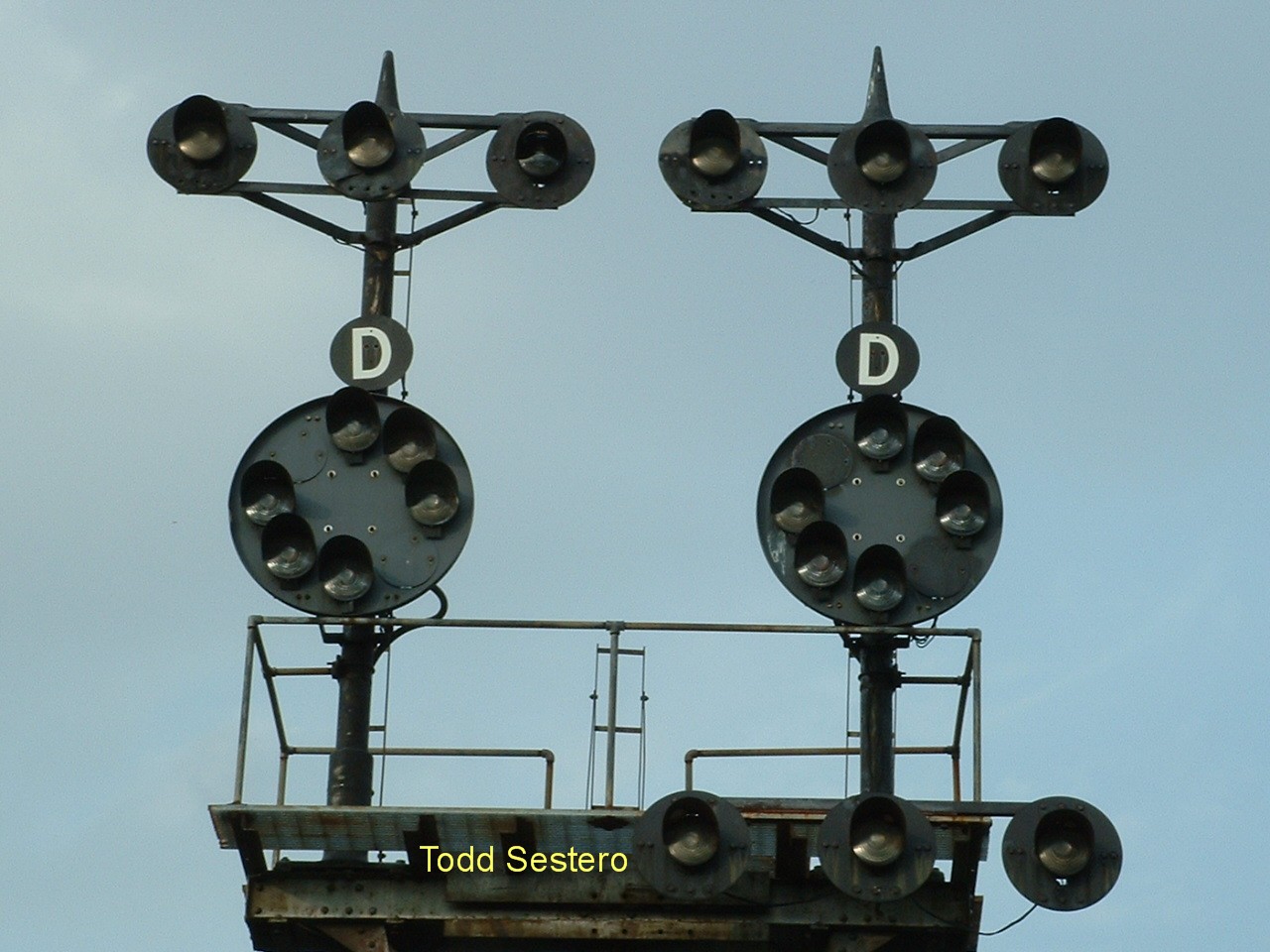
Interpreting / Reading Railroad Signals 2
5.3 Hand and Radio Signals 5.3.1 Hand Signals The following diagram illustrates the hand signals for a train or engine to stop, proceed, or back up. Employees may use other hand signals only if all crew members understand the signals. When employees are not giving hand signals, they must not make any gestures or movements that may resemble a.

Railway Hand Signals Answers Below YouTube
Glossary: Signals - the lineside pieces of equipment that tell drivers if they can pass safely. Cab signalling - a signalling system where the indication to proceed is given to the driver on a display within the cab rather than by lineside signals. Signalling - the broader system that controls train movements.

Railway study Hand signal in indian railway ,safety tranning YouTube
Railroad/Train Hand Signals - RSUS. Hand Signals. Standard PRR Hand Signals and Rules. These pages are from a PRR rulebook dated April 26, 1925. These scans are from pages 15 through 17. For the whistle signals from this rulebook, click HERE. Thanks to Michael Watnoski for loaning me his PRR rulebook. Disclaimers:
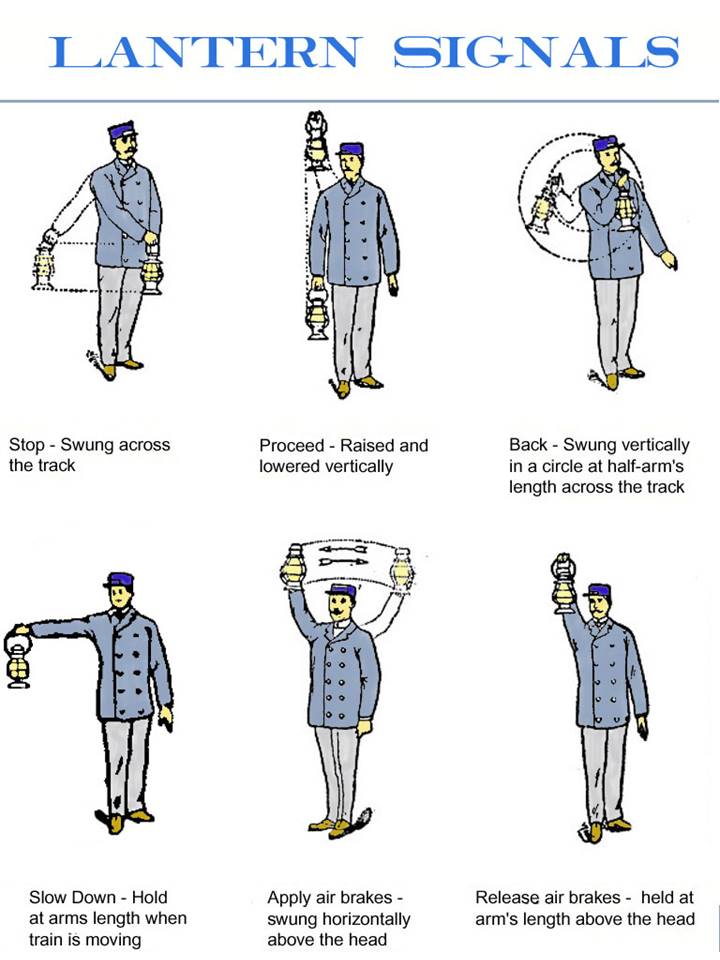
Railroad Signals SCW Model Railroad Club
A Class 66 locomotive (right) is waiting at a red signal while a First Great Western passenger train (left) crosses its path at a junction.. Railway signalling (BE), also called railroad signaling (AE), is a system used to control the movement of railway traffic. Trains move on fixed rails, making them uniquely susceptible to collision.This susceptibility is exacerbated by the enormous weight.

Railroad+Hand+Signals+Meanings Flag Signals Alphabet Signal flags, Navy signal flags
Railroad Hand, Flag and Lamp Signals. The hand or flag, moved the same as the lamp, as illustrated in the following diagrams, gives the same indication, except in the observance of Rule 12a the hand or flag movement may be above the shoulder.. Signals must be given from a point where they may be plainly seen and in such a way that they.

Railroad+Hand+Signals+Meanings Click image to see it larger in a new window. Trains in 2019
The driver or other train crew can use this to alert the signalman of the presence of the train and to enquire why the signal remains "at danger", as we say in the trade. The arm of the signal is displayed in a horizontal position to show the "stop" or "danger" indication. The red lens is illuminated.
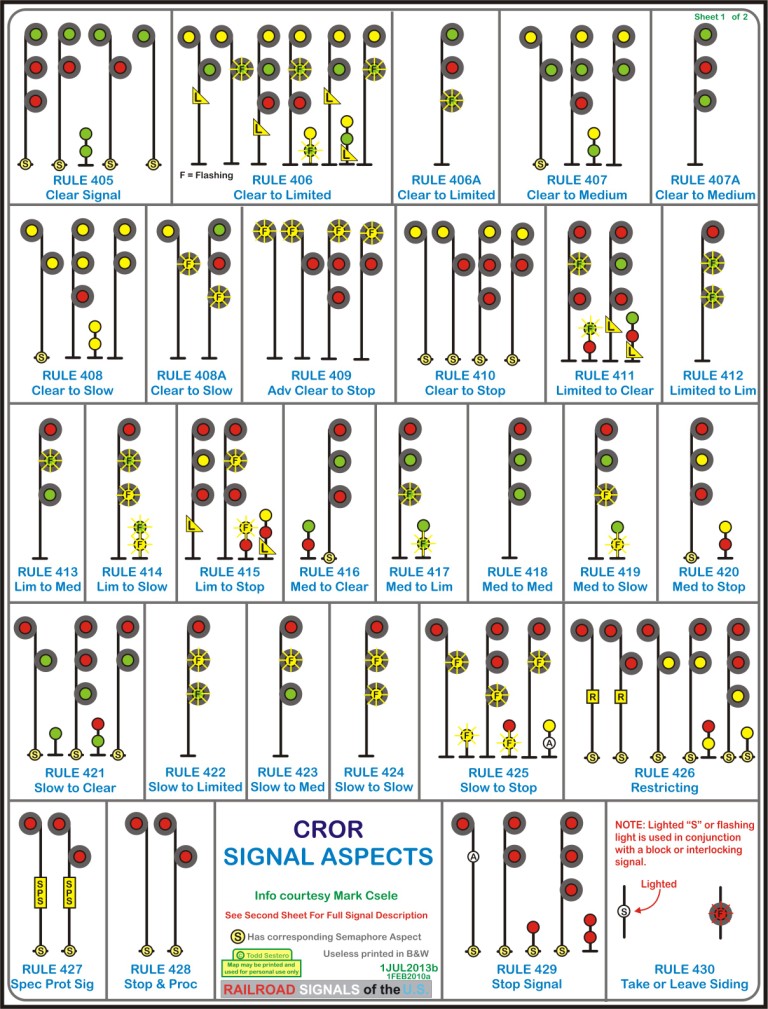
Canadian Railway Operating Rules
RSSB Train Driver Selection Methods Wellbeing Champions Training Rail Consultancy Services. Control, Command and Communications. You will need this handbook if you understand the meaning of signals, handsignals, indicators and signs. Information on changes to this issue can be found in the Rule Book Briefing Leaflet (GERT8000-RBBL Iss 32)

Railway Signals Photograph by Gill Billington Pixels
Railroad hand signals using a lantern. This veteran Norfolk Southern employee demonstrates how to signal the train to stop, proceed, reverse etc. Then we v.
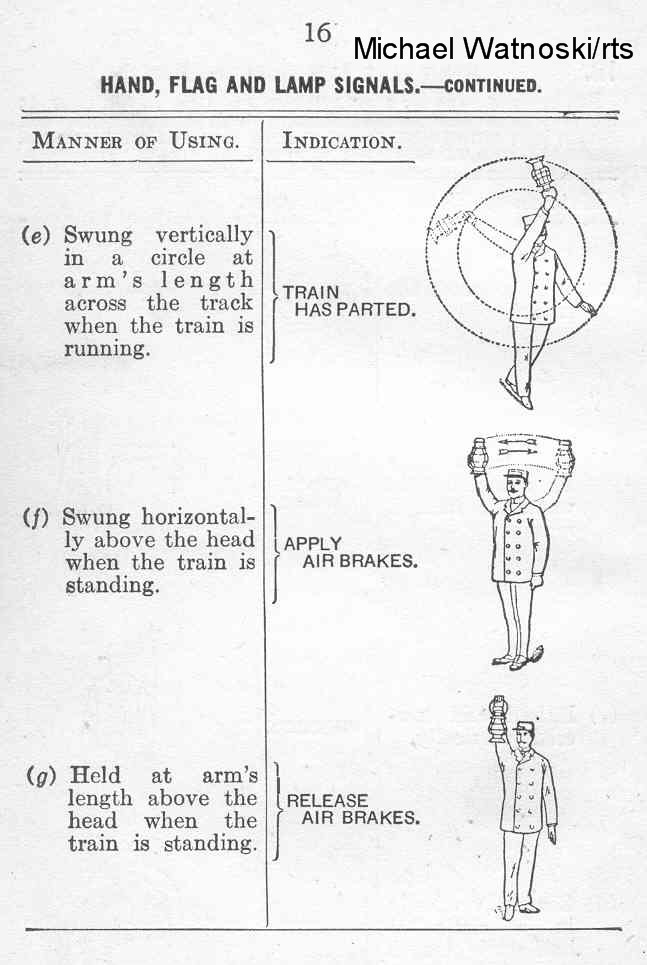
Railroad/Train Hand Signals RSUS
At the exit signal of the TBW section, place one detonator on the line at the signal concerned and display a red handsignal to any approaching train until it stops. Collect the RT3184 ticket. Instruct the driver to obey the signal (or tell them to await your handsignal if the signal is to be passed at danger). Remoe v the detona. tor

Crane (Slinger / Signaller) Hand Signals Download poster
The railway signalling system used across the majority of the United Kingdom rail network uses lineside signals to control the movement and speed of trains. The modern-day system mostly uses two, three, and four aspect colour-light signals using track circuit - or axle counter - block signalling. [1] [2] It is a development of the original.

Railroad+Hand+Signals+Meanings chart showing hazardous materials warning placards. Trains
On an open line, you will be warned when a train is approaching. You will be given enough warning to reach the position of safety at least 10 seconds before the train arrives. The warning will be given by one of the following five methods. Automatic Track Warning System (ATWS): using lights and sirens and/or a personal warning device.
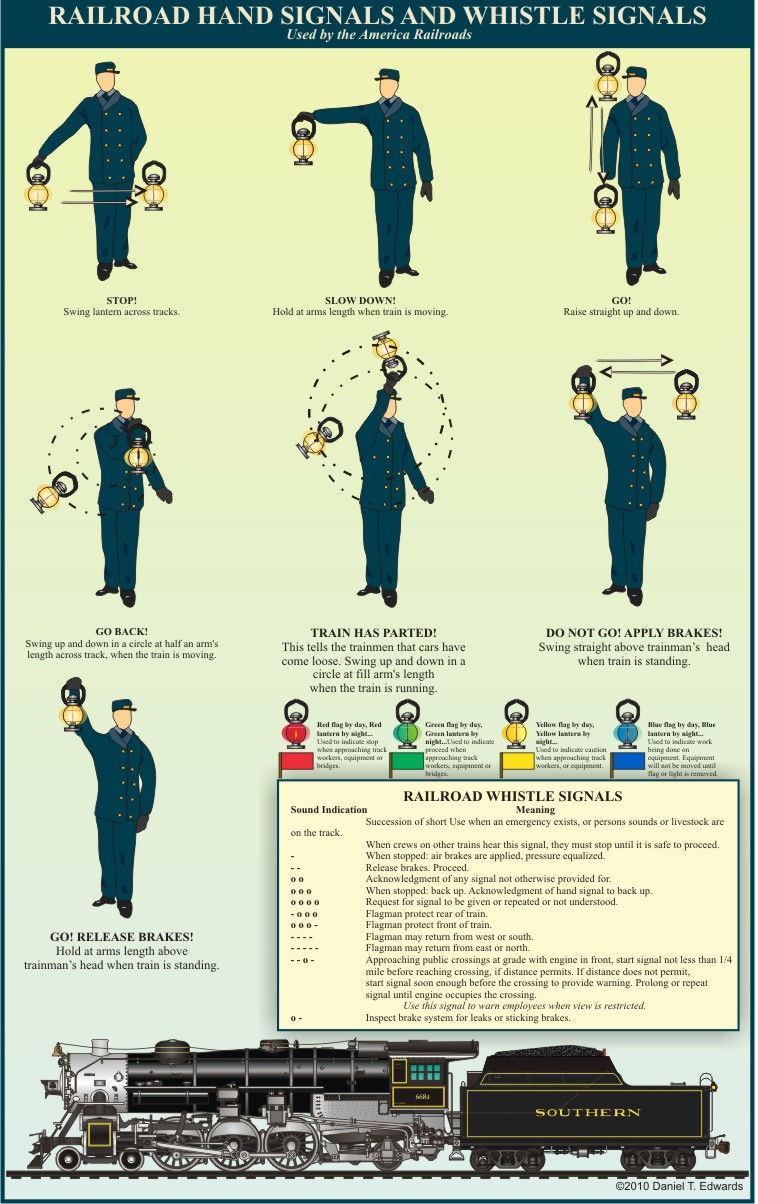
Railroad/Train Hand Signals RSUS
Hand Signals /Hand Signaller. Used, mainly by shunters and guards, to indicate required movements to drivers. Posted on May 13, 2016 by SBrierley .
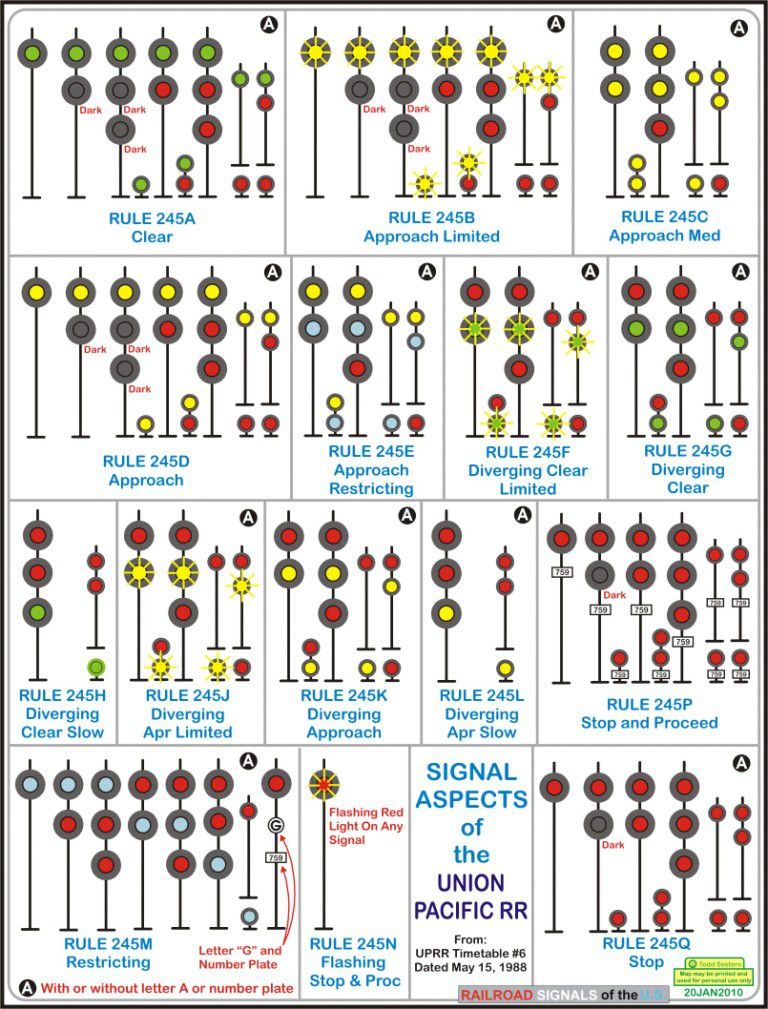
Scale Signal Systems
The shunter will be the only person to exhibit hand signals to trains required to move, with the following exceptions: 2.1.4.1. When an appropriate competent person has been tasked by the shunter with relaying hand signals on their behalf. 2.1.4.2. When a train is being shunted with the guard on board the shunter should display his signals to the
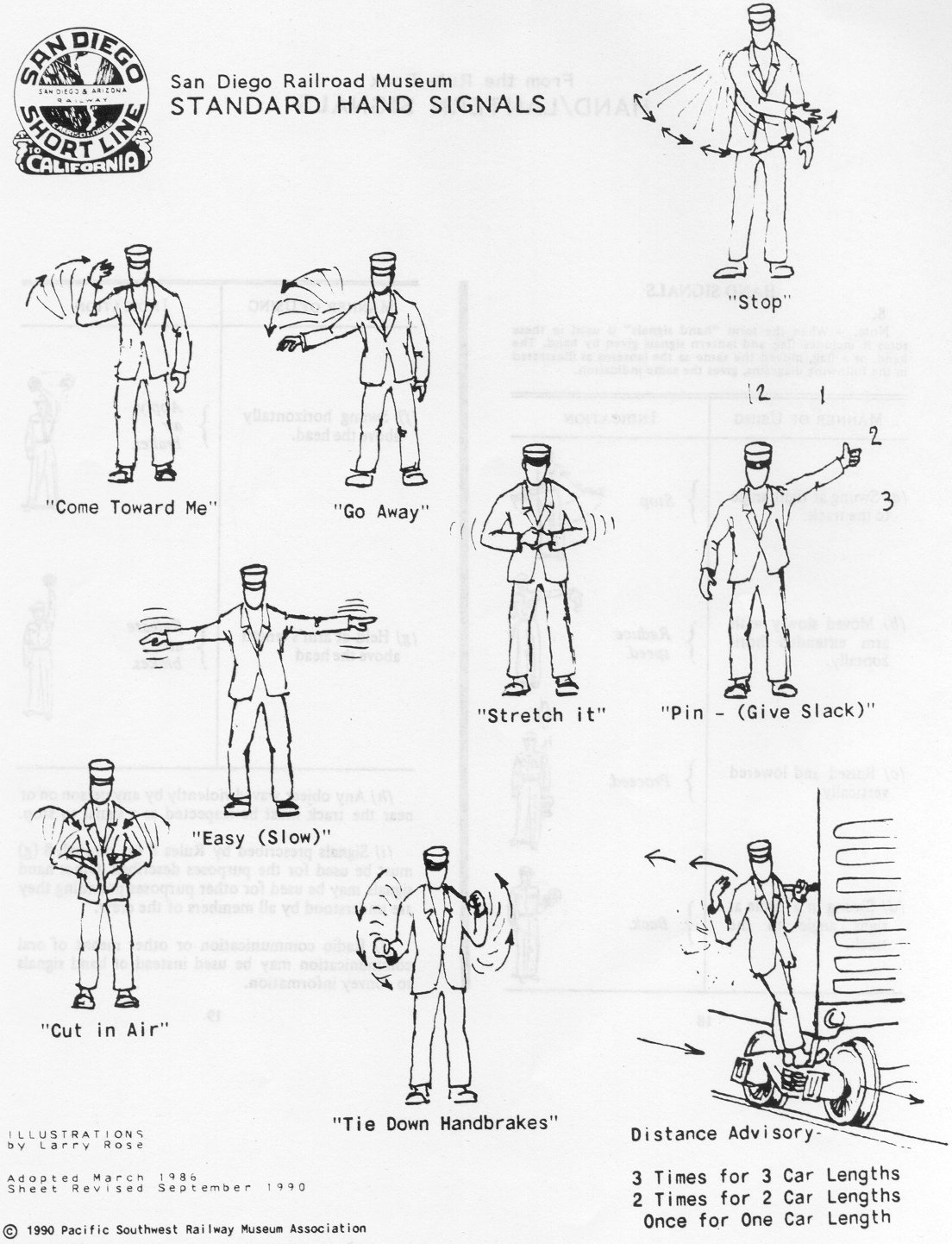
Railroad/Train Hand Signals RSUS
The block occupied by Train 1 is protected by the red signal at the entrance to the block. The block behind is clear of trains but a yellow signal provides advanced warning of the red aspect ahead.This block provides the safe braking distance for Train 2. The next block in rear is also clear of trains and shows a green signal.